Every country provides education to its citizens, but the question is which is the best education system in the world?
Education is powerful and holds the ability to change the world. It is highly transformative. Therefore, every individual must give the highest priority to getting educated. It helps us gain knowledge, make progress in life, transform our lives, serve the country and our people, and understand what’s happening around the world.
With education, an individual can think logically and rationally. There are other advantages as well. To understand them, let us dive into this article and learn more about the world’s best education system!
Which factors define the Best Education System in the world?
Various important factors contribute to deciding the best education system in the world, such as:
- Quality Index: Helps to understand the economic, institutional, and financial factors
- Opportunity Index: Helps to analyze how educated, employed, and economically secure a country is.
Take a look at the top countries according to these two factors.
| Country | Quality Index | Opportunity Index |
| The United States | 78.2 | 69.79 |
| The United Kingdom | 72 | 68.74 |
| Australia | 70.5 | 67.52 |
| The Netherlands | 70.3 | 67.21 |
| Sweden | 70.1 | 66.96 |
| France | 69.9 | 62.54 |
| Denmark | 69.8 | 62.54 |
| Canada | 69.8 | 61.01 |
| Germany | 69.5 | 60.64 |
| Finland | 66.8 | 56.68 |
Best Education System in the World
1. United States of America

- Home to the most Nobel laureates globally.
- A blend of practical and theoretical knowledge in education.
- Prestigious universities like Harvard, Stanford, and MIT.
The United States of America has the most number of Nobel laureates than any other country. Every year, thousands of students try to take admission into various prestigious universities in America. Moreover, The quality of education is unparalleled and presents a combination of both practical and theoretical knowledge.
Best Universities in the USA
| College | Location |
| Harvard University | Cambridge |
| Stanford University | Stanford |
| Yale University | New Haven |
| Massachusetts Institute of Technology (MIT) | Cambridge |
| University of California | California |
Popular Courses in the United States
- Business & Management Studies
- Computer Science
- Engineering
- Communication & Media Studies
- Economics
2. United Kingdom
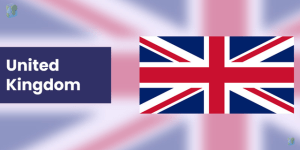
- 18 of the top 100 universities globally according to QS rankings.
- Varied education categories from primary to better schooling.
- Degrees like Bachelor of Arts, Science, and Engineering taking three years to complete.
The United Kingdom is also one of the most popular educational destinations in the world. Thousands of international students wish to enroll in the universities here. According to the QS rankings, it has 18 of the top 100 universities across the globe.
Schooling in the UK is divided into four fundamental categories for children between the age of 5 to 16 years:
- Primary schooling
- Secondary schooling
- Additional schooling
- Better schooling
Moreover, a British bachelor’s degree takes three years to finish. Some of the most famous ones are:
- Bachelor of Arts
- Bachelor of Science
- Bachelor of Engineering
Cost of Studying in the UK
- Undergraduate bachelor program: 9000$-25000
- Postgraduate master’s program: 15000$-30000$
- Doctoral program: 18000$-40000$
The state faculties also provide two-year vocational diplomas. Students who take a one-year diploma get direct second-year access at some of the universities.
Best Universities in the UK
| College | Location |
| University of Oxford | Oxford |
| University of Cambridge | Cambridge |
| Imperial College London | London |
| University College London | London |
| London School of Economics and Political Science | London |
Popular Courses in the United Kingdom:
- Business and Management
- Engineering
- Computer Science
- Law
- Medicine
3. Australia
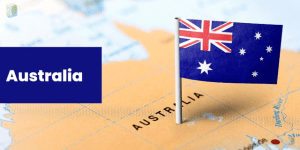
- Seven universities in the top hundred list by QS rankings.
- Over 35 government-funded universities.
- Education recognized by the Australian Qualifications Framework (AQF).
Australia is another popular study location for thousands of students.
According to QS rankings, Australia has a total of seven universities in the top hundred list. It has one of the best education systems in the world. There are 35+ government-funded universities and more than 39 universities in total.
The academic year begins at the end of February or in the initial days of March. In addition, the Australian Qualifications Framework or AQF recognizes the education system.
Best Universities in Australia
| College | Location |
| Australian National University (ANU) | Canberra |
| University of Sydney | Sydney |
| University of Melbourne | Parkville |
| University of New South Wales (UNSW) | Sydney |
| University of Queensland (UQ) | St. Lucia |
Popular Courses in the Australia:
- Medicine
- Business and Management
- Education
- Engineering
- Computer Science
4. Netherland

- Offers English-taught courses for international students.
- Renowned for research work and unique teaching styles.
- Provides undergraduate, postgraduate, and doctoral levels of education.
The Netherland is a non-English speaking country; however, plenty of students wish to go to the Netherlands to study. It offers one of the best education systems in the world.
This country also provides English-taught courses, especially for international students for their comfort. Moreover, these universities are widely famous for their research work and teaching style. Here are some of the best features of the education system of the Netherlands:
- Low tuition fees as compared to other countries.
- Offer 3 education levels: undergraduate, postgraduate, and doctoral degrees.
Best Universities in the Netherlands
| College | Location |
| University of Amsterdam | Amsterdam, Netherlands |
| University of Groningen | Groningen |
| Utrecht University | Utrecht |
| Leiden University | Leiden |
| Erasmus University | Rotterdam |
Popular Courses in the Netherlands:
- Engineering
- Business
- Arts and Humanities
- Social Sciences
- Environmental Sciences
5. Sweden
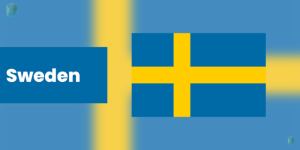
- Focus on knowledge and academic excellence over mere grades.
- No tuition fees for EU students.
- Emphasizes practical work and research in education.
The education system of Sweden focuses more on imparting knowledge and academic excellence than just marks. The Ministry of Research and Education regulates the education system of Sweden.
There is no tuition fee for students from the European Union. It is free of cost.
Moreover, the focus is on teaching the students to work practically. For this reason, educational institutes focus more on research. There are a total of 45 universities in this country, mostly done by the state. Furthermore, the credit system is a crucial part of their education system.
If a student can get 30 ECTS (European Credit Transfer System) per semester, then they can easily clear the degree.
Best Universities in Sweden
| College | Location |
| Stockholm University | Stockholm |
| Gothenburg University | Gothenburg |
| Uppsala University | Uppsala |
| Karolinska Institute | Solna |
| KTH Royal Institute of Stockholm | Stockholm |
Popular Courses in the Sweden:
- Environmental Science
- Engineering
- Computer Science
- Business Studies
- Medicine and Health Sciences
6. France

- Attracts millions of international students annually.
- Offers high-quality education with lower tuition costs than many countries.
- Degrees structured with ECTS credits for bachelor’s, master’s, and doctorate studies.
France provides education to millions of international students annually. But, the education system is a bit complex.
However, higher education is comparatively much cheaper than in other countries. The country also provides fantastic job opportunities for students.
Here are some important requirements if you wish to pursue higher education in France:
- Bachelor’s degree: requires 180 ECTS
- Master’s degree: 2 years of study + 120 ECTS
- Doctorate: 8 years of study and research
Best Universities in France
| College | Location |
| University of Paris-Saclay | Bâtiment Bréguet, Paris-Sorbonne |
| Sorbonne University | Paris |
| University of Montpellier | Montpellier, France |
| University of Bordeaux | Bordeaux |
| University of Strasbourg | Strasbourg |
Popular Courses in the France:
- Fashion and Design
- Business
- Computer Science
- Culinary Arts
- Engineering
7. Denmark

- Free public education system, including higher education.
- Education up to 16 years is compulsory.
- Many courses taught in English targeting international students.
Denmark has some of the most prestigious universities in the world. The teaching style in these institutions makes Denmark one of the world’s best education systems.
Here are some educational facts about Denmark:
- The public education system is free for students. (Primary to higher education).
- The compulsory education is up to 16 years for everyone. After that, it is up to the individual to continue or not.
- There are both public and private educational institutions.
A total of 600 courses are taught in English and universities of Denmark that target mostly international students.
If you are a temporary or permanent resident or a student of the EU, EEA, and Switzerland, there are no tuition fees.
For other students, tuition fees can start at 44,000 DKK (6,500 USD) and go up to 120,000 DKK (18,000 USD) annually.
Best Universities in Denmark
| College | Location |
| University of Copenhagen | Copenhagen |
| Aarhus University | Aarhus |
| Technical University of Denmark | Lyngby |
| Aalborg University | Aalborg |
| Copenhagen Business School | Copenhagen |
Popular Courses in the Denmark:
- Environmental Science
- Engineering
- Design
- IT and Computer Science
- Business and Economics
8. Canada

- Strong, well-funded public education system.
- Education is free for residents until the 12th standard.
- Provisions for various degrees and short-term courses.
Canada is a developed country and is known to have one of the best education systems in the world. This country has a strong public education system that is well-funded.
There is a provision of various degrees and short-term courses in many subjects.
The public institutions are funded by provincial governments and sometimes by the federal government. Moreover, basic public education is free for residents of Canada until the 12th standard. But, international students have to pay fees.
Best Universities in Canada
| College | Location |
| University of Toronto | Toronto |
| McGill University | Montreal |
| University of British Columbia | Vancouver |
| University of Alberta | Edmonton |
| University of Waterloo | Waterloo |
Popular Courses in the Canada:
- Engineering
- Computer Science
- Business Administration
- Health Sciences
- Environmental Science
9. Germany
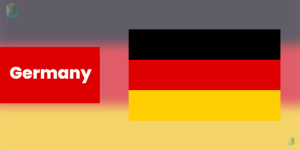
- Known for providing high-quality and practical knowledge.
- Tuition costs were eliminated in 2014 for both resident and international students.
- Popular courses include Bachelor of Arts, Science, Engineering, Laws, and Fine Arts.
This country is famous for providing the best facilities to international students. The education system here provides high-quality and industry-level practical knowledge to the students.
The Federal Ministry of Education and Research is known to be responsible for the German education system.
In 2014, the country slashed the tuition cost for resident and international students. Some of the most popular courses taken by international students are:
- Bachelor of Arts
- Bachelor of Science
- Bachelor of Engineering
- Bachelor of Laws
- Bachelor of Fine Arts
Best Universities in Germany
| College | Location |
| The Technical University of Munich (TUM) | Munich |
| Humboldt University of Berlin | Berlin |
| The Free University of Berlin | Berlin |
| Ludwig Maximilian University of Munich | Munich |
| Heidelberg University | Heidelberg |
Popular Courses in the Germany:
- Engineering
- Natural Sciences
- Business and Economics
- Medicine
- Computer Science
10. Finland
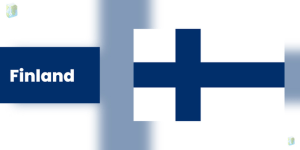
- Consistently top-performing in international assessments.
- Short school days and comprehensive course offerings.
- High teacher to student ratio and high pass rates in secondary schools.
The country has some of the world‘s best educational institutions. It has been a top performer in every program for the International Student Assessment Survey.
Education facts of Finland:
- Shorter school days (190 days per year).
- Students can choose whichever stream they want to. (the list is comprehensive and diverse)
Finland has ranked the highest in various indicators such as:
- Teachers to student ratio
- Number of passing students in secondary schools and primary schools.
Furthermore, education is free for its citizens and is completely borne by the government. Finland has been ahead of the US in science, math, and reading for years.
Best Universities in Finland
| College | Location |
| University of Helsinki | Helinski |
| Aalto University | Aalto |
| University of Turku | Turku |
| University of Oulu | Oulu |
| LUT University (Lappeenranta-Lahti University of Technology LUT) | Lappeenranta |
Popular Courses in the Finland:
- Environmental Sciences
- Engineering
- IT and Computer Science
- Business Studies
- Education
Complex Challenges of Upholding High Educational Standards
Maintaining high education standards presents a myriad of challenges for any country, regardless of its current standing in global education rankings. Here are some of the common challenges that countries with top educational systems might face:
1. Funding and Resource Allocation
Even the best education systems require continuous investment. Securing sufficient funding to maintain small class sizes, pay competitive teacher salaries, update technology, and renovate infrastructure can be challenging, especially in times of economic downturn.
2. Equity and Inclusivity
Ensuring equal access to high-quality education across different regions and among various socio-economic, racial, and ethnic groups remains a persistent challenge. This includes addressing disparities in educational outcomes and opportunities for marginalized communities.
3. Adapting to Technological Change
Rapid technological advancements necessitate constant updates to curricula and teaching methods. Integrating new technologies while maintaining the effectiveness of traditional teaching is a balancing act.
4. Teacher Recruitment and Retention
Attracting and retaining high-caliber educators is crucial. Countries must offer attractive career paths, professional development opportunities, and support systems to keep the teaching profession desirable and sustainable.
5. Curriculum Relevance and Modernization
Keeping the curriculum relevant in an ever-changing global landscape is essential. This involves not only updating content but also pedagogical approaches that foster critical thinking, creativity, and adaptability.
6. Internationalization
As the world becomes more interconnected, there is a growing need for international collaboration in education. However, this presents challenges in standardizing qualifications, maintaining language and cultural identity, and ensuring the mutual recognition of degrees.
7. Student Well-being
The pressure to succeed academically can take a toll on students’ mental health. Countries must balance academic rigor with support for students’ emotional and psychological well-being.
8. Measuring Educational Success
Traditional metrics of educational success may not capture all the skills and competencies needed in the 21st century. Developing new assessment methods to measure a broader range of student outcomes is challenging.
9. Political and Legislative Hurdles
Educational policy is often subject to political influences, which can lead to instability in the system. Long-term planning and reform can be hampered by changes in political leadership and legislative priorities.
10. Global Mobility and Brain Drain
For countries providing a high standard of education, there is the challenge of retaining talent. Students and professionals may choose to work abroad, leading to a brain drain that can deplete the country’s intellectual resources.
Conclusion
These were the best education systems in the world. Every country provides a great learning platform and different ways of teaching. The quality of the education system is concluded based on several factors such as the quality of teachers, practical learning, theoretical learning, etc.
Moreover, the above-mentioned countries show the best prospects in their respective education systems. Along with that, you can also see the top universities in these countries.
We hope that this post helps you in the best possible way!
Good luck!
People are also reading:
- Importance of Books
- Highest Paying Jobs in India
- Interesting Facts about Engineering
- Best Courses After 12th Science
- What is Cloud Computing?
- What is Green Technology?
- Career Options After Engineering
Frequently Asked Questions
1. What is an education system?
The education system means the quality of education being imparted to students in a country.
2. Which country is the best to study in?
Various countries in the world are highly favorable to study, such as the US, UK, Canada, Australia, Germany, and more.
3. Is the US a good country to study in?
Yes, the US is a great country to study. Every year, thousands of students travel to the US to study.
4: Which is the best education system in the world?
There are many excellent education systems in the world such as those of the US, UK, Germany, and many more.

